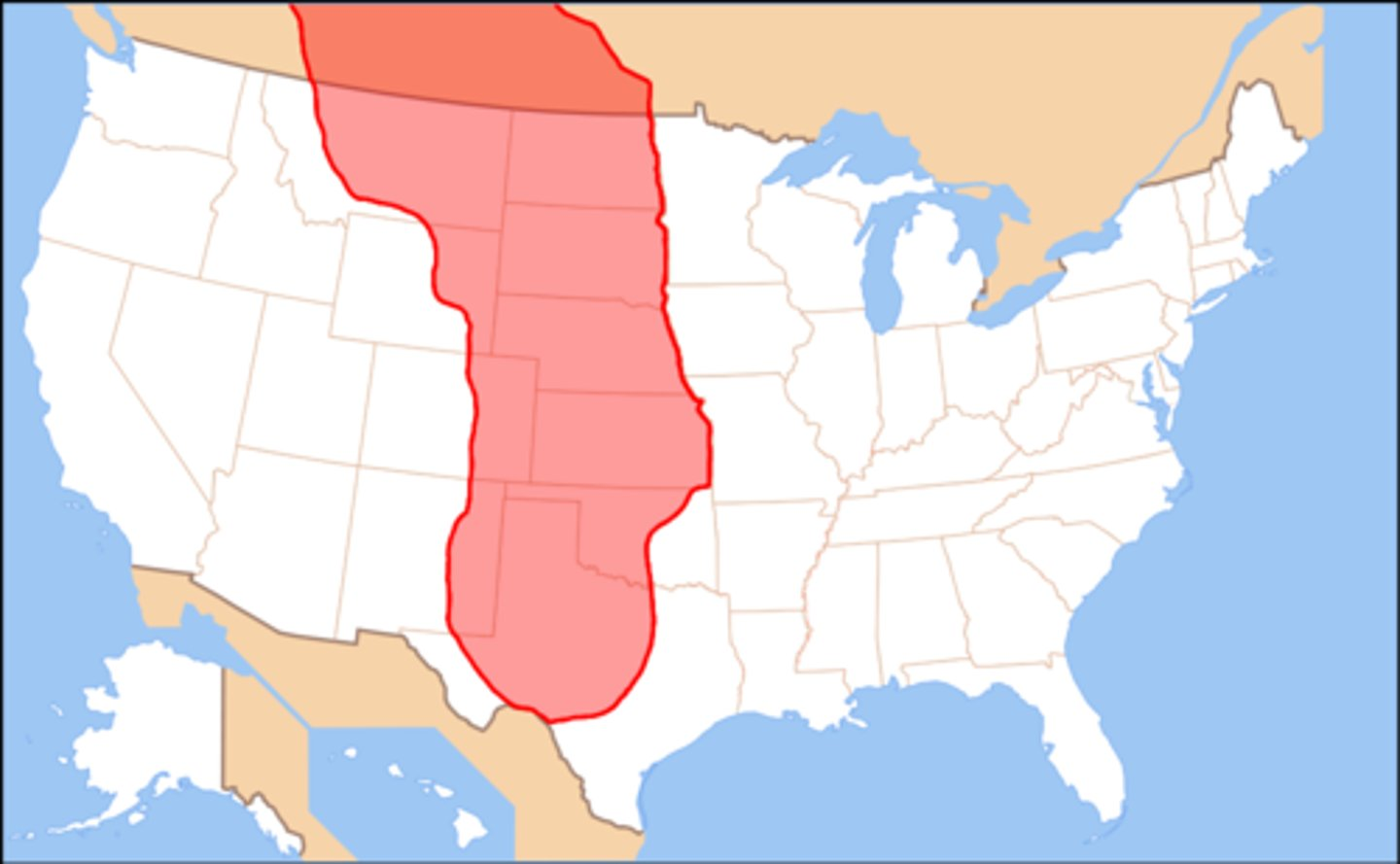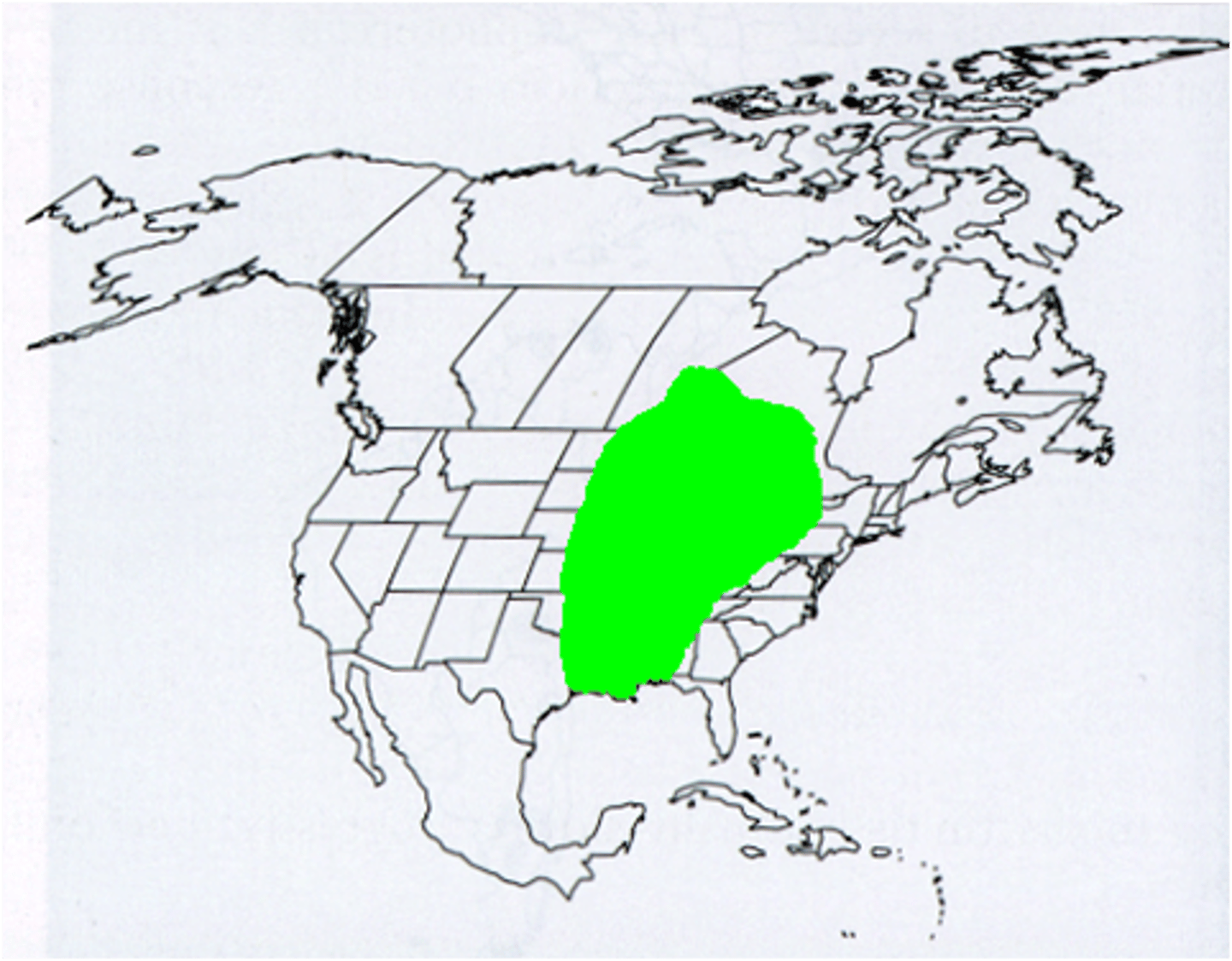APUSH Period 1: 1491-1607
1/41
Earn XP
Description and Tags
Name | Mastery | Learn | Test | Matching | Spaced |
|---|
No study sessions yet.
42 Terms
How were tribes in the Americas described?
Diverse, as they did many different things and had different ways of life. Some farmed, created cities, were nomads, etc.
Aztecs
Also known as Mexica, they created a powerful empire in central Mexico (1325-1521 C.E.). They forced defeated peoples to provide goods and labor as a tax. Civilization at its peak had 300,000 people. The capital city at Tenochtitlan. Had written language, complex irrigation systems, and human sacrifice.
Mayans
Mesoamerican civilization concentrated in Mexico's Yucatan Peninsula and in Guatemala and Honduras but never unified into a single empire. Major contributions were in mathematics, astronomy, and development of the calendar. Had large cities, complex irrigation systems, and large stone temples for rulers/gods.
Inca
A Native American people who built a notable civilization in western South America in the fifteenth and sixteenth centuries. The center of their empire was in present-day Peru. Francisco Pizarro of Spain conquered the empire. The civilization in the Andes Mountains of Peru (at height ruled 16 million people and covered 350,000 square miles. Had fertile mountain valleys and irrigation systems that were great for farming.
Which crop did the Aztecs, Mayans, and Inca grow? How did this affect their society?
Maize - This supported them economically, socially, politically, this was their cash crop that made their civilization grow.
Similarities of the civilizations of the Aztecs, Mayans, and Inca
All located in Central/South America and Mexico.
Maize was the cash crop.
All had complex cities, irrigation systems, writing, and lots of technological advancements along with great infrastructure.
Who were the Pueblo?
Lived in present day Arizona and New Mexico. Sedimentary farmers that built their homes in the open and in sides of cliffs (remember Pueblo National Park). Highly organized society.
Impact of maize on society
Less emphasis on hunting and gathering, increase in population, est. permanent villages with socially diverse societies
Main type of lifestyle in the Great Plains and the Great Basin
Hunting and gathering because of the aridity and lack if natural resources

Type of lifestyle in the Northeast, Mississippi River Valley and along the Atlantic
A mix of agricultural and hunter gatherer economies that favored the development of permanent villages.

Influences of the economy on the Iroquois
The Iroquois were a matriarchal society because they were hunter gatherers. Women oversaw the crops and community affairs while the men were off hunting.
What were the societies of the Northwest and California based on?
Hunting, gathering and foraging
Columbian Exchange
The exchange of plants, animals, cultures, resources, languages, diseased and ideas between the Americas, Europe and Africa.
Introduced crops like maize, potatoes, and tomatoes to Europe
Brought wheat, sugar, and livestock such as horses and cattle to the Americas.
What triggered European nations' efforts to explore and conquer the New World?
The 3 Gs: gold, glory (fame), god
Christopher Columbus
Italian mariner and Genoese explorer who stumbled upon the West Indies in 1492 while in search of a new water route to Asia. Columbus made three subsequent voyages across the Atlantic and briefly served as a colonial administrator on the island of Hispaniola, present day Haiti.
Feudalism
A political and economic system in medieval Europe, in which lesser lords received lands from powerful nobles in exchange for service.
Joint Stock Company (and an example)
People would pool their money to raise money for explorations and would share the profits and losses of colonies. Ex. Jamestown in 1607
Impact of Spanish Exploration/Conquest on natives
Spanish exploration and conquest of the Americas were accompanied by the deadly diseases and killed up to 90% of natives in some places. Relationship characterized by both cooperation and conflict. The Spanish sought to convert Native populations to Christianity, often through missions, while exploiting them for labor and resources. Many Indigenous communities resisted Spanish conquest and colonization, leading to violent conflicts such as the Pueblo Revolt. However, some Native groups allied with the Spanish to gain advantages over rival tribes.
How did the introduction of horses impact life on the Great Plains?
Some tribes became horse nomads
Hunting became more important as ranges increased
More frequent contact with other tribes caused an increased likelihood of competition and conflict
Wealth was sometimes measured by ones horses
Could carry larger loads
Encomienda System
Was a Spanish labor system in which conquistadors and colonists were granted control over Indigenous communities in exchange for protecting them and converting them to Christianity. In practice, it resulted in the forced labor and severe exploitation of Native Americans, particularly in agriculture and mining. The system contributed to the decimation of Indigenous populations through harsh conditions, overwork, and exposure to European diseases, while enriching the Spanish Empire.
When did the Atlantic slave trade being and by whom?
~1526 by the Portuguese
Caste System
Categorized people in the Spanish colonies into various groups, including Peninsulares (Europeans who held the most power), Creoles, Mestizos, and Indigenous and African people (who had the least power and faced severe restrictions and exploitation), influencing their societal roles and privileges.
Bartoleme de Las Casas
A Spanish soldier involved in the conquest of Cuba, became a priest. He concluded that many of the activities of the Spanish in the New World were morally wrong. As a missionary, he dedicated his life to the protection of Native Americans. Advocated for better treatment of natives and contributed to the Black Legend.
Justifications for poor treatment of Africans and Natives
Racism, religious expansion (spread of Christianity), seen as barbaric
Hernando Cortes
The leader of the Spanish conquistadors, he invaded and destroyed the Aztecs
Ferdinand Magellan
Portuguese seaman, who in the employ of Spain set out to find passage through or around South America, and consequently led the first voyage around the globe.
Treaty of Tordesillas
Treaty between Spain and Portugal defining the Spanish claim on exploration and settlement west of the Cape Verde Islands in 1494.
Cahokia
Mississippian settlement near present-day East St. Louis, home to as many as 25,000 Native Americans. Known for creating Mounds (such as Monk’s Mound, Mound 72, etc.) used as plazas, sites for elaborate burial rituals, sacrifices, and offerings.
Aztec Human Sacrifice
Sacrifices of captured enemies or citizens was often intended to please the gods. They were often killed in elaborate ceremonies with specially made and adorned knives.
Valladolid Debate (1550-1551)
The first moral debate in European history to discuss the rights and treatment of a colonized people by colonizers.
Bernal Diaz del Castillo
Soldier in Cortez's army, wrote the True History of the Conquest of New Spain, a populist history, exalting courage of common soldier. Along with Cortes he greatly admired the Aztec capital of Tenochtitlan.
Triangle Trade
a trade route that exchanged goods between the West Indies, the American colonies, and West Africa
Mississippi River Valley
Home to complex and agriculturally advanced societies, such as the Mississippian culture (e.g., Cahokia). These societies built large earthen mounds and developed trade networks, political hierarchies, and religious systems. The fertile soil supported the "Three Sisters" (maize, beans, and squash) agriculture, enabling population growth and urbanization.
Southwest/Great Basin
Was characterized by dry climates, leading to the development of irrigation systems by groups like the Ancestral Puebloans to grow crops such as corn and beans. With its more sparse resources, the Great Basin fostered a nomadic lifestyle focused on hunting and gathering. Cultural adaptations in both areas were closely tied to water scarcity and the desert environment.
Plains Region
Were dominated by wandering tribes that relied on bison hunting for food, clothing, and tools. Following the introduction of horses by Europeans, Plains societies became highly mobile, facilitating trade and warfare. The environment shaped their social structures, seasonal migrations, and dependence on natural cycles.
Southeastern US
This region supported rich agricultural societies like the Creek, Cherokee, and Choctaw, with economies based on maize cultivation, hunting, and fishing. The warm climate and abundant rivers allowed for complex political systems and trade networks, with cultural practices often linked to the rhythms of the seasons and natural resources.
Pacific Northwest
The Pacific Northwest was abundant in marine and forest resources, leading to the development of complex, sedentary societies such as the Tlingit and Haida. These groups relied heavily on fishing, especially salmon, and built large, ornate plank houses. Totem poles and potlatch ceremonies reflected their rich cultural traditions and social hierarchies.
Great Lakes Region
Supported the Algonquin and Iroquoian peoples, who utilized the extensive waterways for fishing, trade, and transportation. Forest resources allowed for the construction of longhouses and canoes, while the lakes facilitated interaction and alliances, such as the Iroquois Confederacy.
Eastern Seaboard
Had mild temperatures, many forests, a variety of wildlife, and supported diverse societies like the Powhatan and Wampanoag. These groups practiced a mixed economy of agriculture, hunting, and fishing. Proximity to the Atlantic facilitated early interactions with European colonists, profoundly impacting trade, alliances, and conflicts.
Juan Ginés de Sepúlveda
Thought that the natives should be slaves because of their crimes against nature and against God; thought they were barbaric and inhuman; argued against Bartolomé de Las Casas in Valladolid Debate
Virginia Company
granted all the lands stretching from present-day North Carolina to southern New York by James I in 1606; all men at first; established Jamestown; granted land to every freeman that settled there with imported servants; charter revoke in 1624
Indentured servants
people pay off ticket to new world with labor; ideally would be given land and whatever needed to get started, however would be given rocky, non-fertile land; poor health; allowed to die by owners; even if make it to freedom it's hard